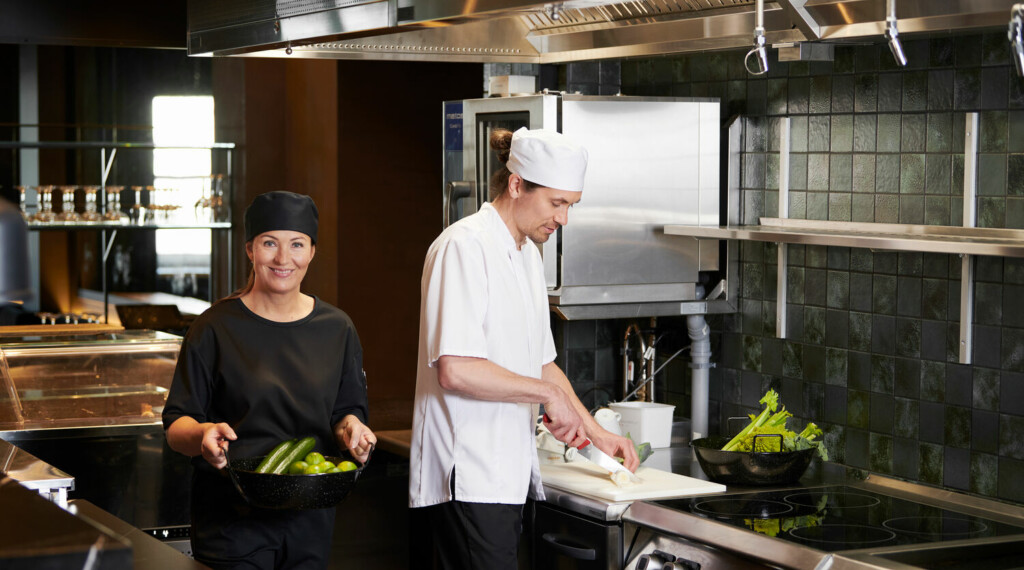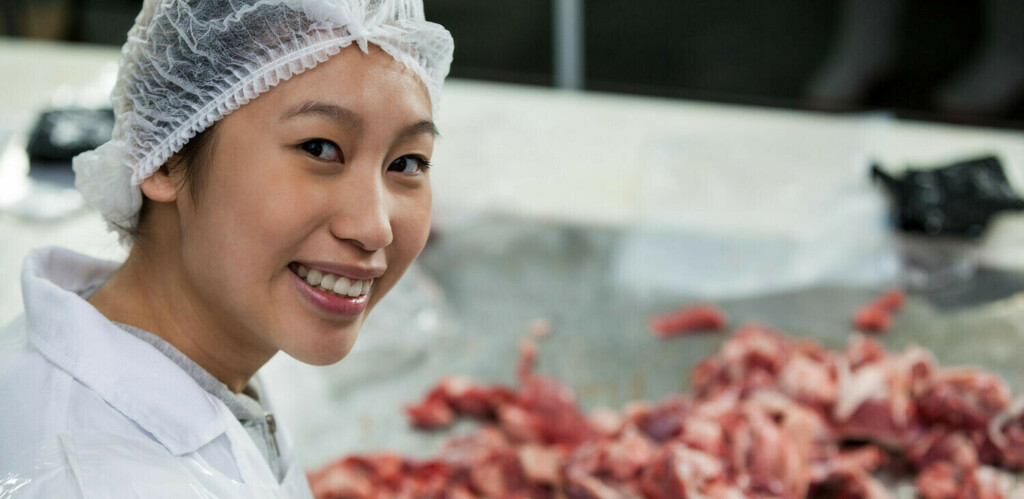
We work closely with our suppliers to drive positive change in the textile industry.
With over two decades of experience working at Lindström, Elina Harjanne currently leads a team in Europe creating sustainable workwear and circular economy solutions. At Lindström, we have workwear collections tailored for different industries, including service segments.
Elina has evolved through diverse roles at Lindström over the years — from her first position as a product assistant to overseeing global workwear projects and managing collections in China and India.
A fashion design graduate, Elina’s interest in functional clothing led her to the workwear industry. “Workwear covers many different industries and environments, so there’s endless problem solving to be done to overcome technical challenges. There’s always room to think through things differently when creating different types of workwear.”
Leading a creative team
Elina supports her team of designers and product managers in balancing creativity and data-driven decision making. “Most of my team’s motivation comes from creating something totally new and innovative. I need to give them space for creative work, but also look at the data to make decisions holistically.”
To create innovative products, Elina’s team needs to look to the future, considering what trends and challenges might lie ahead. “It’s not about how the world looks today, but we should be thinking about how the world will look five years from now. The most crucial thing to understand is how the customer’s world might change and what we can do to support them over time.”
In this age of change and uncertainty, predicting what lies ahead is no doubt challenging. But Elina sees making mistakes as part of the strategic process.
“One of key things when working with a development team is allowing failures to be part of the journey. We might not succeed in everything we do, but we need the courage to try things out. We can always redefine our direction along the way.”
Designing workwear for sustainability and durability
Elina is all about making workwear better for the planet. But when she started in the textile industry over 20 years ago, things looked very different. “Sustainability wasn’t discussed or even thought about that much. Back then, it was a race to create more, faster. Now, we’re taking a step back, aiming for better results with less — meaning fewer products with a purpose instead of constantly adding new things to our planet. In all our development decisions, we need to balance economic efficiency with social impact.”
Acknowledging the major impact of textiles on the planet, we aim to build a closed-loop recycling system. We recently launched new workwear collections made from recycled materials, and we plan to recycle the textile waste we generate into new raw materials for our products.
But we can’t do this alone. “We work closely with our suppliers to drive positive change in the textile industry,” says Elina.
When it comes to workwear, durability is a must. Workwear garments withstand a lot of wear and tear, demanding higher quality material compared to the fashion industry. “We’ve successfully introduced new collections that maintain the same durability and longevity while using recycled materials, minimising the burden to the planet.”
Customer-centric development
Understanding customers’ priorities and pain points is crucial to develop high-quality workwear. Elina and her team host workshops with customers to understand their needs and wishes, and discover how to meet their expectations in the best possible way.
“We always have real clients test our products to get their feedback and comments. By developing our collections in this iterative way, we ensure we’re responding to our customers’ needs.”
For Elina, keeping an open mind is crucial. “Part of the creative process involves keeping your mind open and listening to all kinds of feedback that you get from the world around you — that’s where you’ll get the information about where to go.”




